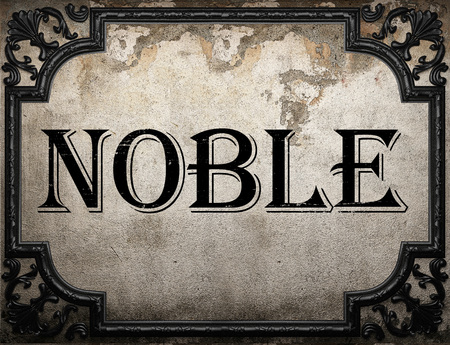
All the cool kids have a purpose.
Philosophers have been talking about purpose and meaning since the dawn of time.
But since I wrote Selling with Noble Purpose in 2012, and trademarked the Noble Purpose methodology for business, the idea of purpose in business has become mainstream.
More and more companies are declaring their purpose.
And who doesn’t want to think their work is a noble endeavor?
After implementing my Noble Purpose methodology with hundreds of companies worldwide, I can assure you, a purpose statement alone is not enough to create competitive differentiation or emotional engagement.
For the Noble Purpose methodology to work, the leader must implement it at every level of the organization.
Here’s a summary of the key areas we focus on with clients for a successful implementation.
Saying you want to make a difference or be a good corporate citizen is nice.
However, a true Noble Purpose is a succinct statement that defines the impact you want to have on customers.
For example, our client Foundation Supportworks’s Noble Purpose is to redefine their industry.
In the world of home contractors, not everyone is consistently reliable or professional.
Foundation Supportworks is on a quest to change the way the world experiences contractors.
To achieve that we’ve put metrics, behaviors and a narrative against their Noble Purpose.
Our clients typically see substantial revenue gains as a result of implementing Noble Purpose.
Hootsuite – whose Noble Purpose is “We help clients turn messages into meaningful relationships” – doubled their business during the two years we worked with their team.
Shelf Genie – “We turn frustration and pain into enjoyment and love” – grew revenue by 40% in one year.
But it’s important to remember, revenue is a lagging indicator.
It’s the result of culture, behaviors and mindset.
With both clients, Hootsuite and Shelf Genie, we identified leading indicators like sales activity, leadership language, and customer engagement. We provided training for each metric, and we measured progress on a regular basis.
Leaders must clarify what it looks like when you’re living your Noble Purpose and when you’re not.
Our client, G Adventures – “We help people discover more passion and happiness” – spells out exactly what a passionate happy client looks like.
We also map how each job in the organization affects customer passion and happiness.
We work with clients to identify two or three company-wide behaviors that embody their Noble Purpose.
At Hootsuite, compelling storytelling is a key behavior.
At Foundation Supportworks, consistent punctuality is a company-wide expectation.
As our client, Mike Gianoni, CEO of software leader Blackbaud, said in his Lead with Purpose Twitter chat, “Keep customers at the center of everything you do. Know that purpose drives profit, not the other way around.”
Strategy is about making choices.
We work with leadership teams to define where they’re going and where they’re not.
A strategy based on desired revenue numbers will never achieve competitive differentiation or emotional engagement.
A Noble Purpose strategy is clear, concise and customer-focused.
In addition to the above, we infuse Noble Purpose into hiring, onboarding, training, marketing, and daily operations.
Lofty words can jumpstart the process, but as anyone knows, implementation is what determines success.
Which steps do you need to implement to make Noble Purpose “happen”?